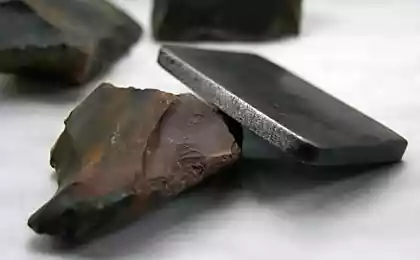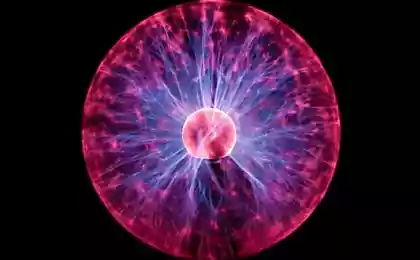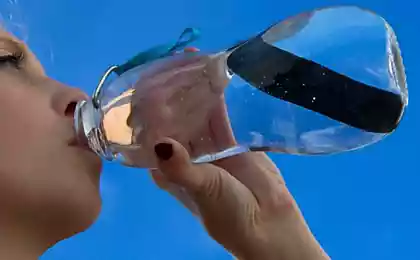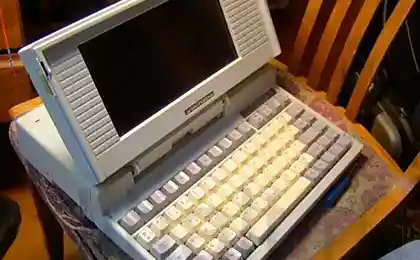390
Germanium will take the place of silicon in electronics
Future electronics should be looked for in the past. Researchers working on the use of germanium — element transistors 1940-ies. In the future germanium may replace silicon. Over it specialists of Ohio state University. At the meeting of the American Association for the advancement of science (American Association for the Advancement of Science) associate Professor-chemist Joshua Goldberg announced on the outlined progress in the development of form Germany, which is called "Hermann". In 2013, the Goldberg lab at the University for the first time succeeded in obtaining germanna sheet with a thickness of one atom. However, the silicon material silicene is also considered as the basis of the chips of the future. Graphene continues and may become the material of future technologies.

Germany in its natural form. Photo by Joshua Goldberg from Ohio state University
According to the resource ScienceDaily, Goldberg and his group of scientists were looking for ways to provide inter-atomic bonding and created a hybrid version of the material, where the binder on the top and bottom of the sheet apply to other atoms, not only germanium.
The goal is to create material that allows not only to transfer electrons 10 times faster than silicon, but also better able to absorb and emit light. This will improve the efficiency of LEDs and lasers.
And in this respect there has been some success reported by himself Joshua Goldberg:
We understood the nature of these relationships, we are able to customize the electronic structure of the material. We can increase or decrease the amount of energy they absorb. In the potential we can create material that covers the entire electromagnetic spectrum, or absorbs different colors, depending on the links in it.
Scientists are developing various forms of germanna. This will make possible the application of the material in various areas where silicon is used today. Because the material is very thin, it can be considered two-dimensional (2D).
It can be used not only in electronics but also as a "topological insulator". Electricity will accumulate only on the contours of the material. Lab Goldberg was already convinced that it exists only in theory the material can attain chemical stability. The laboratory was created Germany, 9% of the bonding atoms. In a stable condition to hold hydrogen "fasteners" hermannova top and bottom of the sheet.

Top and bottom of the sheet of atoms Germany are the atoms of another material, which play the role of "mounts"
Scientists work to find a more modern replacement for silicon. It's hard to say how soon the fruits of these labors will find their practical application. Today technology has reached such heights that it is difficult to imagine the direction in which they could develop further. published
P. S. And remember, only by changing their consumption — together we change the world! ©
Source: hi-news.ru

Germany in its natural form. Photo by Joshua Goldberg from Ohio state University
According to the resource ScienceDaily, Goldberg and his group of scientists were looking for ways to provide inter-atomic bonding and created a hybrid version of the material, where the binder on the top and bottom of the sheet apply to other atoms, not only germanium.
The goal is to create material that allows not only to transfer electrons 10 times faster than silicon, but also better able to absorb and emit light. This will improve the efficiency of LEDs and lasers.
And in this respect there has been some success reported by himself Joshua Goldberg:
We understood the nature of these relationships, we are able to customize the electronic structure of the material. We can increase or decrease the amount of energy they absorb. In the potential we can create material that covers the entire electromagnetic spectrum, or absorbs different colors, depending on the links in it.
Scientists are developing various forms of germanna. This will make possible the application of the material in various areas where silicon is used today. Because the material is very thin, it can be considered two-dimensional (2D).
It can be used not only in electronics but also as a "topological insulator". Electricity will accumulate only on the contours of the material. Lab Goldberg was already convinced that it exists only in theory the material can attain chemical stability. The laboratory was created Germany, 9% of the bonding atoms. In a stable condition to hold hydrogen "fasteners" hermannova top and bottom of the sheet.

Top and bottom of the sheet of atoms Germany are the atoms of another material, which play the role of "mounts"
Scientists work to find a more modern replacement for silicon. It's hard to say how soon the fruits of these labors will find their practical application. Today technology has reached such heights that it is difficult to imagine the direction in which they could develop further. published
P. S. And remember, only by changing their consumption — together we change the world! ©
Source: hi-news.ru























